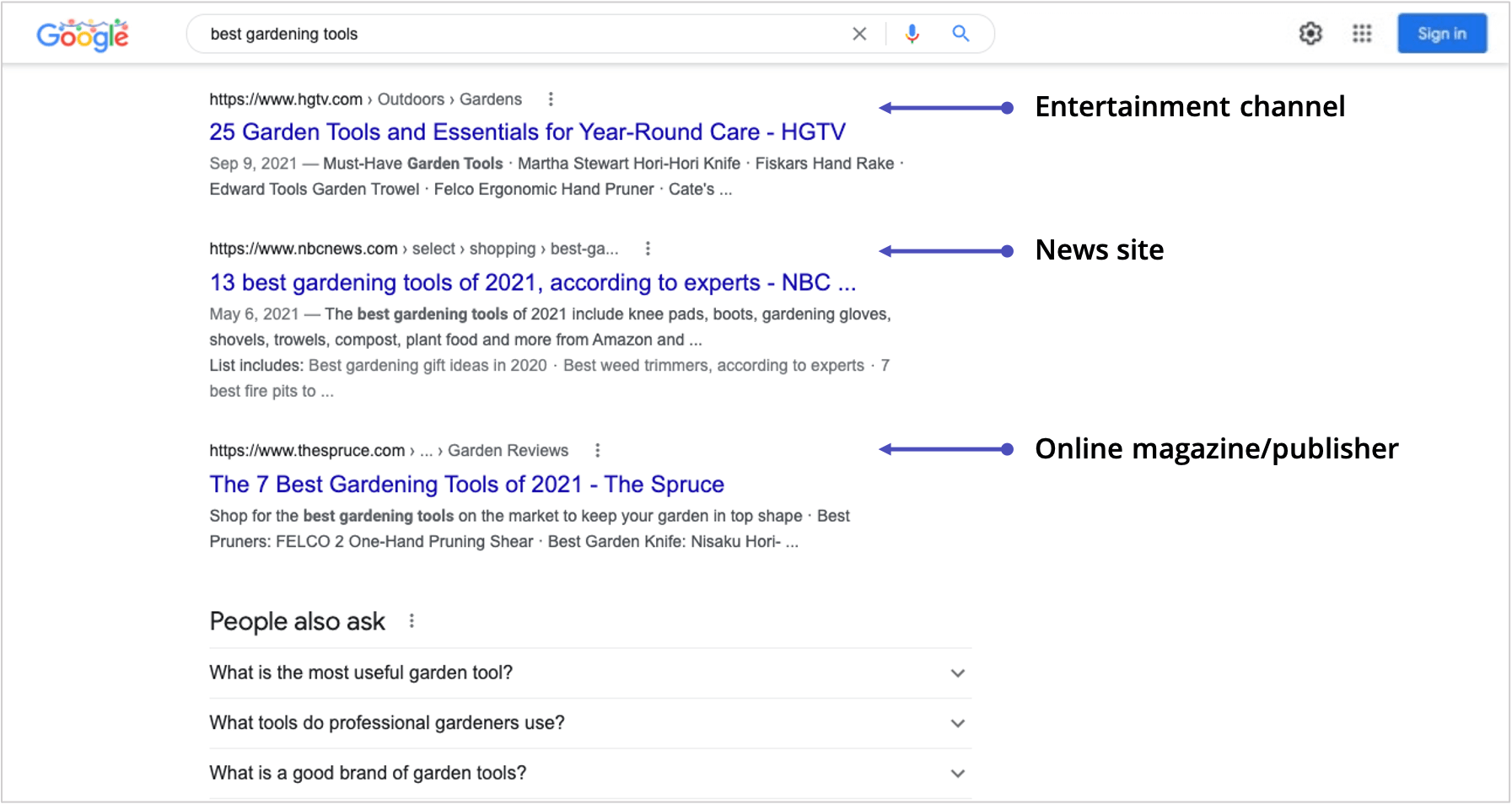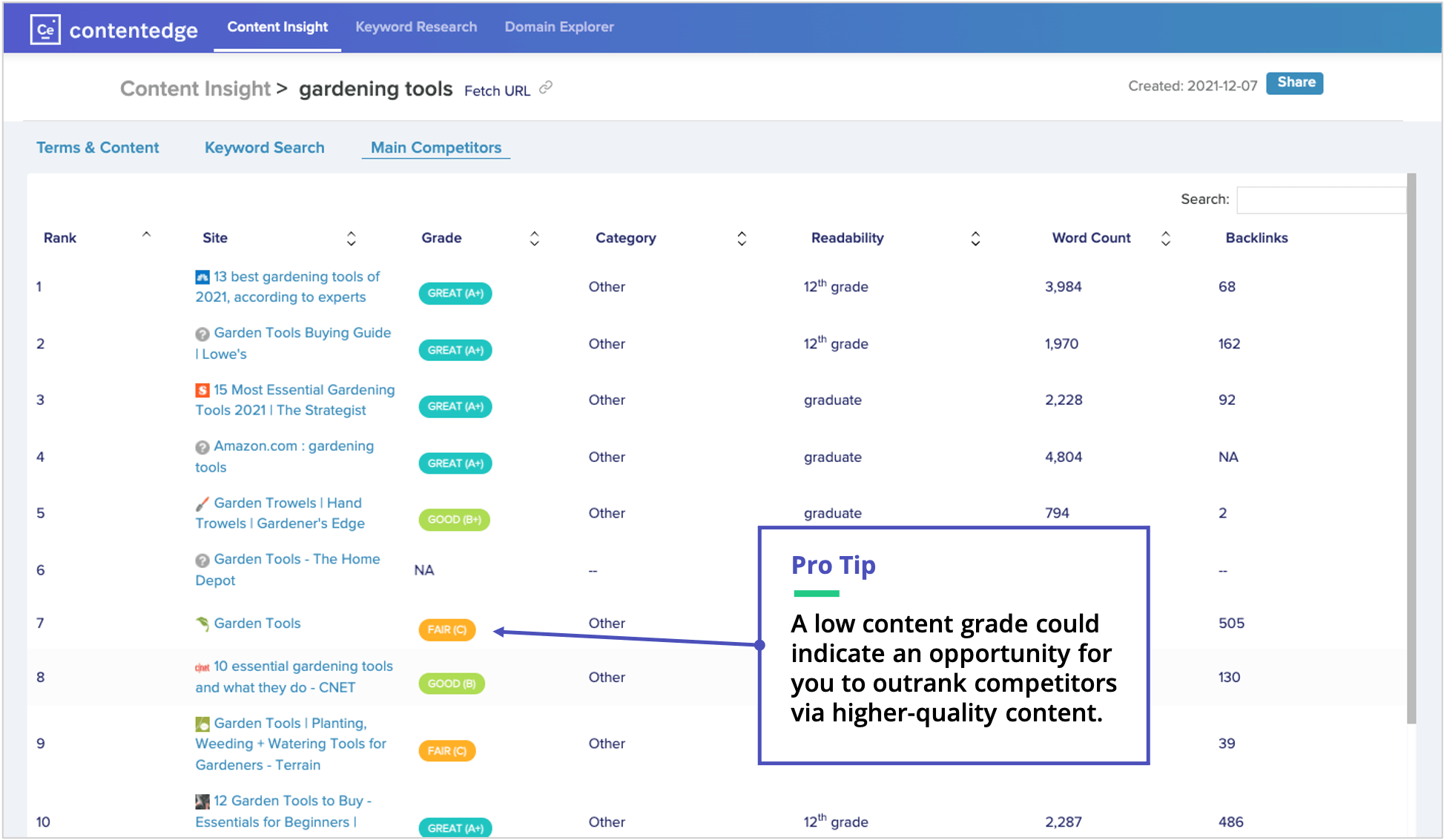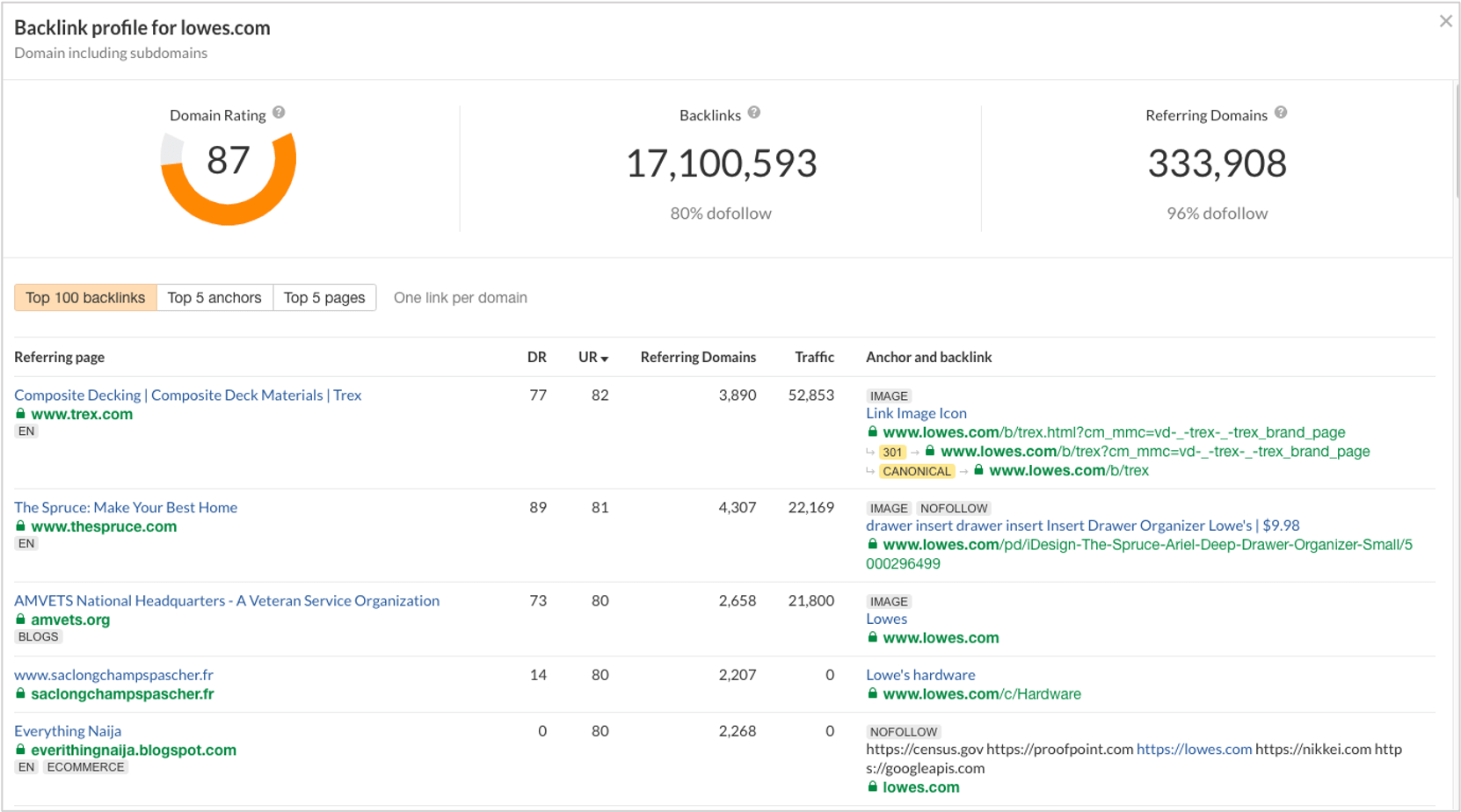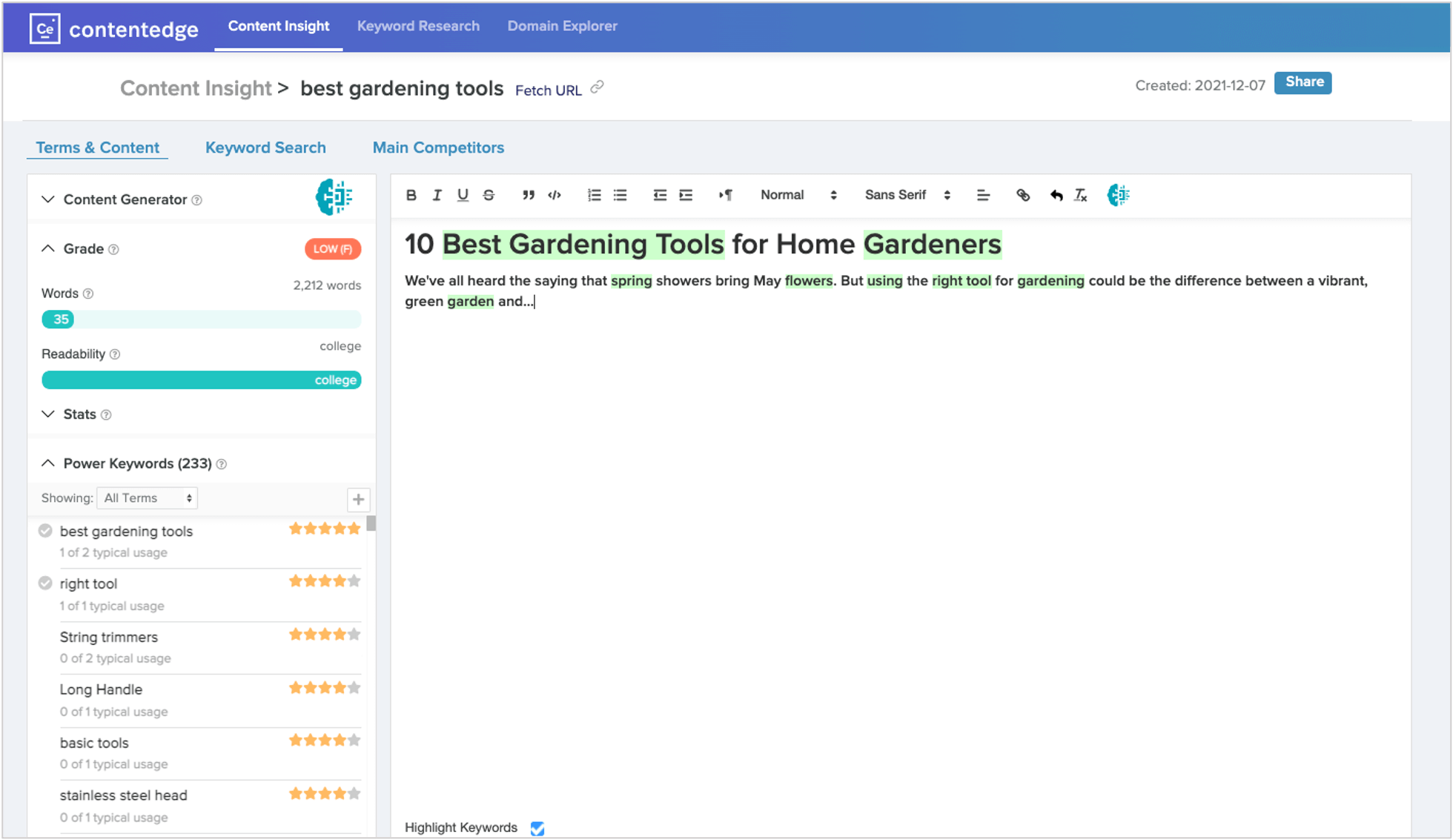It’s easy to forget that SEO is a multiplayer game.
You’re not a solo player simply navigating Google’s strict guidelines. Rather, you’re one player competing against millions of other sites that are all vying for Google’s favor.
For this reason, competitive research is a core part of building an SEO strategy. It keeps you from operating in a bubble or simply following gut feelings—and points you towards proven strategies that can help you to outrank other sites quickly and methodically.
To keep you grounded, here are several steps to help you properly analyze your organic competition. Keep reading for practical tips on how to save time and increase rankings by peeling back the layers of your competitors’ SEO playbooks.
1. Identify your real competitors
The first thing to remember is that your SEO competitors aren’t always the same as the competitors that you’re used to talking about in your sales and marketing meetings. There’s likely some overlap, but until you’ve done the research, you won’t know for sure.
Case in point: let’s say you own a hardware store and are looking to rank for the term “best gardening tools” on Google. You’ll not only be competing against the Lowe’s and Ace’s of the world. You’ll likely run up against publications, news stations, and other sites that offer their own shopping guides.

Even if you pivot to a more transactional term (“best hardware store in San Francisco”), you face competition from Yelp, Foursquare, and/or smaller retailers that have a dominant local SEO presence. Your competition can vary from query to query, so you’ll want to take the time to investigate which competitors rank where.
To that end, there are several ways to identify your competitors:
- By keyword: When building out your keyword strategy for a page, enter your terms into Google or ContentEdge’s Content Insights tool. Which results appear in the top five to 10 organic results? Before jotting these URLs down as worthy competitors, check that their content is relevant to your business and that you can realistically compete against them. (If your Google search is pulling up irrelevant results, or if the first page is dominated by a huge company like Amazon, then you’ll want to target a different long-tail keyword.)

- By domain: If you’re looking to identify competitors for your site overall, then fire up ContentEdge’s Domain Explorer. Enter your URL and check out your main organic competitors. ContentEdge will show a list of competitors based on common keywords, which then gives you an idea of which sites to keep an eye on and potentially learn from.
2. Find keyword gaps
“Keyword gaps” refers to keywords that drive traffic to your competitor’s sites, but not your own. You can find these by digging deeper into your competitor’s keyword rankings. Using your notes from step one, enter your competitors’ URLs into ContentEdge’s Domain Explorer tool. View the list of keywords that come up and identify ones that could be strategic for your business too.
Check that keywords are…
- Relevant to your business and the product, service, or expertise that you offer
- Relevant to your audience, in that they attract people with the right intent
- Able to be won (e.g., you’re not trying to beat Wikipedia or other sites with very high domain authority)
For additional context, take some time to look through your competitor’s site, including any blogs or other subdomains. Observe how they position themselves around these keywords and how often they speak about them. This could provide clues for how you can become an authority around the same topics.
To identify other keyword opportunities, analyze the keywords that your site already ranks for. Pay special attention to terms where your rankings could be improved. Who ranks above you for these keywords? Why? Consider ways to close the gap between you and your competitors, such as refreshing content or A/B testing SEO.
3. Analyze top content
Another way to understand the competitive landscape online is by looking at the top pages (by traffic) of competitive sites. This gives you an idea of what’s resonating with your shared audiences.
While you can’t, unfortunately, spy on your competitors through the lens of Google Analytics, you can leverage a tool like Semrush’s Organic Research report to pull up a list of top pages based on estimated traffic to them. Note which site pages, blogs, and other properties drive the most traffic.
Take this a step further by peeking at your competitor’s actual site and studying their approach to addressing these topics, visualizing concepts, and/or promoting further learning. You could even sign up for your competitor’s newsletters to keep a pulse on their latest initiatives.
You’ll also want to take notes on what differentiates your product or service from competitors that directly compete with your line of business. This will inevitably come in handy when you go to create new content around similar topics.
4. Find link gaps
Backlinks are critical to off-page SEO. The top results on Google SERPs, after all, tend to have 3.8 times more backlinks than those below them. But link-building remains one of the most difficult parts of search optimization, according to 41% of SEO experts.
Fortunately, through competitive research, you can uncover new backlinking opportunities. For example, Ahrefs’ free backlink tool allows you to quickly find sites that have an interest in content like yours. Simply enter a competitors’ URL to see their backlink profile.

Look for sources that provide ‘dofollow’ links to pages that are similar to yours. Consider reaching out to these sources—but remember to present a strong case as to why your content is more reliable, up-to-date, or helpful than your competitor’s.
Alternatively, you could propose a content collaboration whereby you plan a marketing campaign that appeals to your shared audiences. This will more naturally yield backlinks to your content and often inspire partners to proactively promote your brand.
5. Mimic winning content strategies
Once you’ve identified topics and keywords worth targeting, perform your normal steps for research in addition to using ContentEdge’s Content Insights tool to measure the competitiveness of your page.
After you enter your primary keyword into Content Insights, you’ll be able to draft content directly inside the tool. Or, if you’re looking to optimize an existing page, copy and paste the URL into Content Insights.

Content Insights will return a breakdown of the optimal length, readability level, and more for your content based on the top-ranking pages for that keyword. It’ll additionally provide a list of related words that are frequently used in conjunction with your primary keyword.
Given Google’s focus on content relevance, it’s especially important that you speak in the same language as your target reader. Make sure to provide the right amount of detail in a way that your readers enjoy consuming, keeping in mind that a good user experience is paramount to a high ranking.
6. Keep an eye on lost/won keywords over time
Google is constantly running tests to better understand search intent and deliver the most relevant results. This means that rankings are always changing; just because you rank number one for a keyword today doesn’t mean you’ll rank there forever.
Similarly, just because a competitor outranks you today, doesn’t mean they’ll be there tomorrow.
You’ll therefore need a process for regularly checking keyword positions for both your site and your competitors’ sites. Keep note of what positions changed and why. Is there anything that you can do to capture keywords that your competitors lost? Are you at risk of losing your top positions, unless you elaborate or refresh your content?
You should be tracking keyword movement at least once a month. However, you’ll want to refrain from making large changes to your pages if your content is new (and still needs time to find its footing on Google SERPs) or Google releases a big update. In the latter instance, you’ll want to consult experts like RankScience or wait a few weeks as things stabilize before jumping into action.
The bottom line: don’t neglect competitive SEO research
When you’re creating content or optimizing your site, you don’t have to reinvent the wheel each time. Save yourself time, stress, and confusion by learning from those around you. Adopt proven tactics into your own strategy, and stake your claim at the top of search results.
